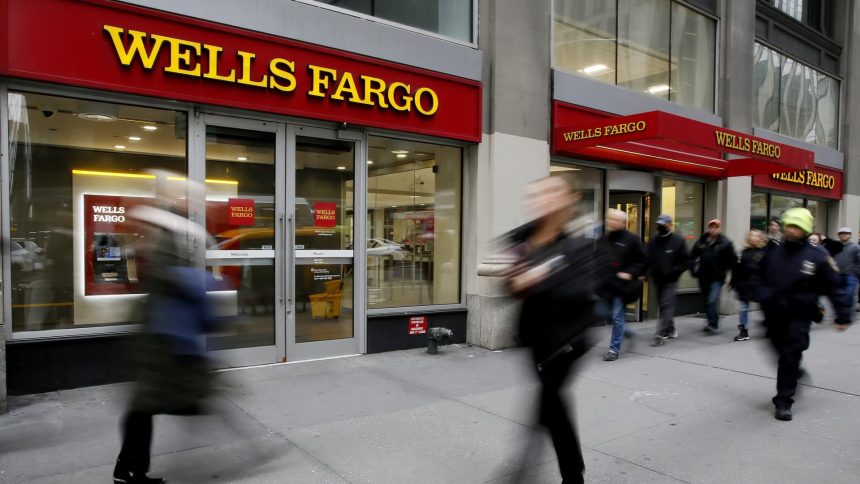Wells Fargo was snared in an industrywide probe into mortgage bankers’ use of loan discounts last year, CNBC has learned.
The discounts, known as pricing exceptions, are used by mortgage personnel to help secure deals in competitive markets. At Wells Fargo, for instance, bankers could request pricing exceptions that typically lowered a customer’s APR by between 25 to 75 basis points.
The practice, used for decades across the home loan industry, has triggered regulators’ interest in recent years over possible violations of U.S. fair lending laws. Black and female borrowers got fewer pricing exceptions than other customers, the Consumer Financial Protection Bureau has found.
“As long as pricing exceptions exist, pricing disparities exist,” said Ken Perry, founder of a Washington-based compliance firm for the mortgage industry. “They’re the easiest way to discriminate against a client.”
Wells Fargo received an official notice from the CFPB called an MRA, or Matter Requiring Attention, on problems with its discounts, said people with knowledge of the situation. It’s unclear if regulators accused the bank of discrimination or sloppy oversight. The bank’s internal investigation on the matter extended into late this year, said the people.
Wells Fargo, until recently the biggest player in U.S. mortgages, has repeatedly felt regulators’ wrath over missteps involving home loans. In 2012, it paid more than $184 million to settle federal claims that it charged minorities higher fees and unjustly put them into subprime loans. It was fined $250 million in 2021 for failing to address problems in its mortgage business, and more recently paid $3.7 billion for consumer abuses on products including home loans.
The behind-the-scenes actions by regulators at Wells Fargo, which hadn’t been reported before, happened in the months before the company announced it was reining in its mortgage business. One reason for that move was the heightened scrutiny on lenders since the 2008 financial crisis.
Wells Fargo later hired law firm Winston & Strawn to grill mortgage bankers whose sales included high levels of the discounts, said the people, who declined to be identified speaking about confidential matters.
‘Proud’ bank
In response to this article, a company spokeswoman had this statement:
“Like many in the industry, we take into consideration competitor pricing offers when working with our customers to get a mortgage,” she said. “As part of our renewed focus on supporting underserved communities through our Special Purpose Credit Program, we have spent more than $100 million over the last year to help more minority families achieve and sustain homeownership, including offering deep discounts on mortgage rates.”
Wells Fargo was “proud to be the largest bank lender to minority families,” she added.
Wells Fargo stock vs the Financial Select Sector SPDR Fund
Regulators have ramped up their crackdown on fair lending violations recently, and other lenders besides Wells Fargo have been involved. The CFPB launched 32 fair lending probes last year, more than doubling the investigations it started since 2020.
Several banks received MRAs about lending practices last year, the agency said without naming any of the institutions. The CFPB declined to comment for this article.
‘Statistically significant’
The issue with pricing exceptions is that by failing to properly track and manage their use, lenders have run afoul of the Equal Credit Opportunity Act (ECOA) and a related anti-discrimination rule called Regulation B.
“Examiners observed that mortgage lenders violated ECOA and Regulation B by discriminating against African American and female borrowers in the granting of pricing exceptions,” the CFPB said in a 2021 report.
The agency found “statistically significant disparities” in the rates in which Black and female borrowers got pricing exceptions compared to other customers.
After its initial findings, the CFPB conducted more exams and said in a follow-up report this year that problems continued.
“Institutions did not effectively monitor interactions between loan officers and consumers to ensure that the policies were followed and that the loan officer was not coaching certain consumers and not others regarding the competitive match process,” the agency said.
Honor system
In other cases, mortgage personnel failed to explain who initiated the pricing exception or ask for documents proving competitive bids actually existed, the CFPB said.
That tracks with the accounts of multiple current and former Wells Fargo employees, who likened the process to an “honor system” because the bank seldom verified whether competitive quotes were real.
“You used to be able to get a half percentage off with no questions asked,” said a former loan officer who operated in the Midwest. “To get an additional quarter point off, you’d have to go to a market manager and plead your case.”
Pricing exceptions were most common in expensive housing regions of California and New York, according to an ex-Wells Fargo market manager who said he approved thousands of them over two decades at the company. In the years the bank reached for maximum market share, top producers chased loan growth with the help of pricing exceptions, this person said.
Change of policy
In an apparent response to the regulatory pressure, Wells Fargo adjusted its policies at the start of this year, requiring hard documentation of competitive bids, said the people. The move coincided with the bank’s decision to focus on offering home loans only to existing customers and borrowers in minority communities.
Many lenders have made pricing exceptions harder for loan officers to get and improved documentation of the process, though the discounts haven’t disappeared, according to Perry.
JPMorgan Chase, Bank of America and Citigroup declined to comment when asked whether they had received MRAs or changed their internal policies regarding rate discounts.
With reporting from CNBC’s Christina Wilkie
Read the full article here




